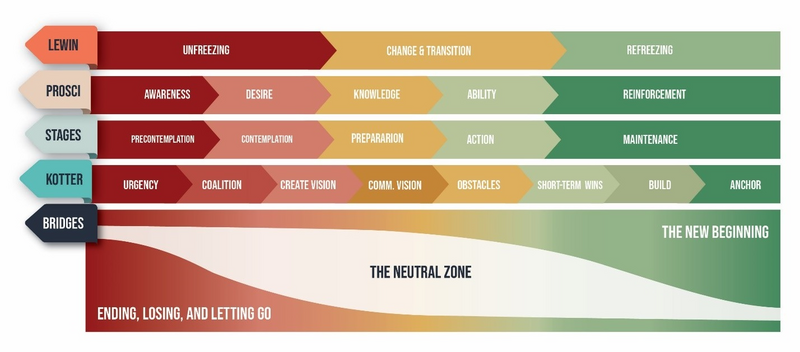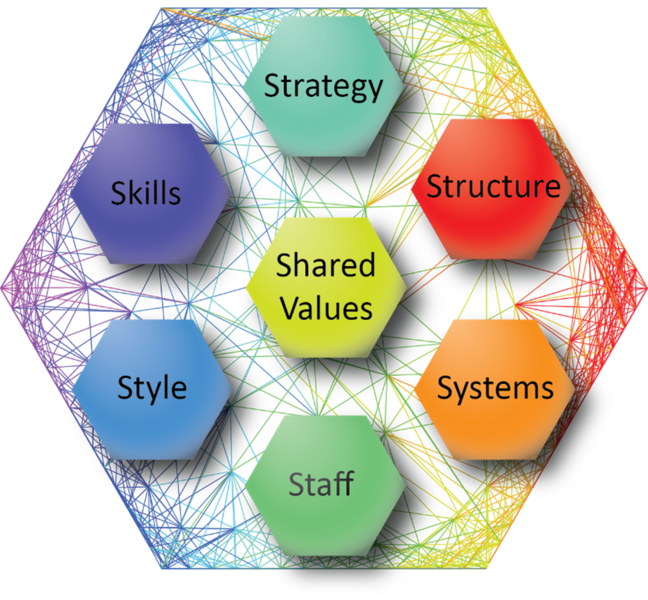ATD Blog
Choosing a Change Model
Wed Mar 17 2021

Bookmark
One of the most daunting problems with change management is identifying which model to use. Some people swear by Kurt Lewin’s simple three-step model, others are hooked on Prosci’s ADKAR model, others love John Kotter’s eight-step model, and still others are using models by different change management luminaries. But why would you pick one model over another, and how do the models compare? We’ll explore the common options and explain the reasons why you may choose one versus another.
It Starts With Lewin
Most people agree that change management began with Lewin’s article in the inaugural edition of the Human Relations journal in 1947. As a leading researcher, he had been working on force fields, topological psychology, and other factors related to understanding how people behaved. His article briefly mentioned the need to unfreeze the current behavior, make the change, and refreeze the new behavior. This started the three-step change model.
The problem with the model is that it wasn’t detailed enough, so others came up with their models, which further subdivided the three steps of Lewin’s.
Popular Linear Models
Lewin’s simple, linear model led to several similar ones including Prosci’s ADKAR model, the transtheoretical model (often called stages of change), and Kotter’s famous eight-step model. In Figure 1, you can see these models mapped to one another.
Figure 1: Model Roadmap

Prosci’s ADKAR model includes steps for creating awareness, initiating desire, developing knowledge, creating ability, and reinforcing the new behaviors. In Prosci’s model, awareness and desire unfreeze the current behavior, while knowledge and ability are equivalent to Lewin’s change step. The model ends with reinforcement, which Lewin calls refreezing.
The transtheoretical, or stages of change, model recognizes that unfreezing is the process of reducing the resistance to change and thus uses precontemplation to describe folks unwilling to enter into a conversation about change and contemplation for those who are willing to consider a change. The preparation and action stages map to Lewin’s change step. The stages of change model end with maintenance, which maps to Lewin’s refreezing step.
Kotter’s model has eight steps and focuses on larger organizations. Kotter believes that, to initiate a change, you must start with creating a sense of urgency followed by creating a coalition then a vision. These steps are about getting the organization ready for change (unfreezing them).
Nonlinear Models
While there are many models that are linear, not all of them are. Some models, like William Bridges’s transitions model, maintain the familiar appeal of a linear model while recognizing the messy middle. Bridges’s model applies Elisabeth Kübler-Ross’s model of grief to change, indicating the loss that happens as things change may be why people might resist it. This is followed by an awkward transition toward the vision and, eventually, the establishment of a new routine.
More divergent from the linear basis are models like the McKinsey 7S Framework model and the Burke-Litwin model (see Figures 2 and 3, respectively). These models are sets of interrelated factors that must be manipulated to accomplish change.
Figure 2: The McKinsey 7S Framework Model

Figure 3: The Burke-Litwin Model

Picking the Model
George Box, a statistician, said, “All models are wrong, but some are useful.” Every model is a simplification from reality, which hides some aspects to emphasize others. The goal should not be to find a perfect model but to find the model that provides the most utility.
The primary constraint to selecting a model is the degree of complexity that the organization is capable of adopting in the execution of the change program. For those organizations with less sophisticated approaches, it may be that Lewin’s model is appropriate. For those for whom it appears that complicated models are not a problem, a model such as Burke-Litwin’s may be appropriate.
Whatever model you choose, the more you can do to develop your skills in change management, the more successful you’ll be.
If you’d like to review more models and how they work, you can find a free library of change models at ConfidentChangeManagement.com/change-models.

